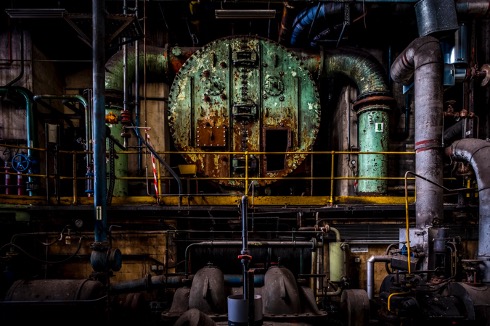
Nuclear decontamination considerations & proven advantages
Introduction
Decontamination is a major activity that may be used to accomplish several goals, such as reducing occupational exposures, limiting potential releases and uptakes of radioactive materials, salvage equipment and materials or facilitate waste management. It is defined as the radioactive contamination transfer from a support to a material that can be reduced to a smaller volume and easily stored. Several techniques can be used on the contaminated surfaces of facilities or equipment, for example, by washing, heating, chemical or electrochemical action, mechanical cleaning, or other techniques during any phase of a plant lifecycle, from operations to decommissioning. This paper is intended to describe some of the fundamentals involved to address practical decontamination problems.
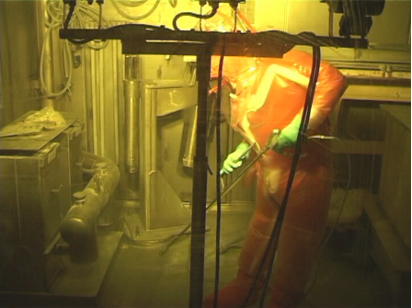
Objectives
Nowadays, decontamination is an important consideration and part of any waste management strategy. The drivers for decontamination can be many but will always have a clearly defined purpose aligned to the ALARA/ALARP (As Low As Reasonable Achievable/Practicable) principle of risk reduction. Either for reduction of exposure or waste re-categorisation, for operational or decommissioning activities, decontamination can be an effective tool provided the right technique is used in the right circumstances. It is hence essential to obtain a complete understanding of the context, requirements and plant constraints before selecting any given decontamination process.
Selection criteria
The right decontamination process must be designed for a specific application. As such, a wide variety of parameters need to be taken into account and would include information such as the operating history of the plant; equipment or process (reactor, reprocessing…); type of material (steel, concrete, zircaloy, plastics…); surface type (rough, porous, coated…); geometry of the plant or equipment, type, composition and distribution of contaminant (alpha, beta-gamma, radionuclides, labile or fixed); access constraints; contamination control; exposure level; regulatory requirements…
As well as a detailed analysis based on site-specific conditions, other important requirements must be considered when selecting a specific decontamination technique. As such, safety (the method should not result in increased hazards), efficiency (ability to remove contamination from a surface to the required level), cost-effectiveness (not give rise to costs which exceeding the costs of other waste treatment or disposal), waste minimisation (not give rise to large quantities of secondary waste) and the potential for industrialisation (should not be labour-intensive) will also be part of the essential considerations when selecting an appropriate method.
Decontamination methods
The number of decontamination methods, either as a wet (e.g., chemical application, water jetting) or dry process (e.g., scabbling, sand blasting) does extend beyond chemicals, to physical and abrasives through to water jetting or laser scabbling (Table 1).
| Wet Chemicals | Liquids, foams, gels, chemical-controlled erosions |
| Water jetting | Removal of coatings, high pressure water jetting, cutting |
| Abrasives | Wet and dry, sand, garnet, bead |
| Mechanical / Physical | Scabbling, needle scabbier, laser |
| Fixatives & Strippable coating | Fixed for long term operations, peel off |
Each method has its own performance envelope, wastes and support needs that are to be considered alongside the factors presented above. Ultimately, all these considerations and information will help define an ideal decontamination method and how it might be deployed in a specific scenario.
Requirements for an ideal situation
As you can imagine, choosing the right decontamination approach can be a demanding exercise. Each technique also has its advantages and disadvantages which will influence its compatibility on a specific scenario. For instance, chemical decontamination is relatively simple and known as current practice in many nuclear plants and facilities. A lot of experience exists and with proper selection of chemicals, almost all radionuclides may be removed from a contaminated surface. The main disadvantage of chemical decontamination is the generation of secondary liquid waste. The handling, treatment and conditioning of this secondary waste does require particular attention. Overall, when selecting a decontamination option, the by-products generated by a process are often cause for concern.
Development concerning the decontamination of solid materials in the nuclear industry are driven by a strong need to reduce secondary wastes. Classical techniques based on physical (e.g., spraying abrasive) or chemical methods (e.g., chemical product spraying and flush) usually led to excessive amounts of waste which in turn also create challenges. Ideally, a decontamination process should be simple to use, allow for a substantial radiation exposure reduction, minimise secondary waste and lead to a successful re-categorisation of waste to achieve lower disposal cost.
Proven advantages – Case study
A major objective for a successful decontamination process is the volume reduction of secondary waste and the minimisation of reactants consumption. Within the context of nuclear plants maintenance and dismantling, we here would like to focus on an attractive decontamination technique developed by FEVDI and the CEA that does lead to the suppression of the liquid secondary effluents volume. It is based on the use of self-drying gels sprayed on surfaces to decontaminate. The water-based gel dries off to leave on the surface dries solids flakes containing the contaminants which can be removed easily by brush and vacuuming, without water rinsing. The advantages of such treatment are numerous:
- These gels can be easily and safely implemented on the surface to be decontaminated in the form of a film deposited on the surface by spraying or brushing,
- Using gel makes it possible to avoid, during on-site decontamination of radioactive installations, the splashes of aqueous solutions producing large quantities of radioactive effluents for limited efficiency, due to the low contact time with the parts. This viscosity of the gel and long contact time during the drying step allow for high efficiency and high DF (Decontamination Factor),
- By removing the conventional operation of rinsing the gel with water, no liquid effluent is to be produced or be treated subsequently, leading to a clear financial advantage,
- After total drying in less than 24 hours, the gels lead to solid flakes removed with the radioactivity that they have fixed by simple brushing or vacuum. The residues are large flakes (3×3 mm on average), the dried gel does not produce dust and hence does not create extra risk: there is no airborne particles.
Using ASPIGEL® is simple. First, the gel is sprayed onto the surface to be cleaned (Figure 2). Then, as the gel is able to dry at room temperature in less than 24 hours, the gel cracks and leads to the formation of solid tiles (Figure 3), coming off more or less easily from the surface. Last, the final solid particles containing the pollutants are removed from the surface (Figure 4) and recovered by vacuum or brushing.
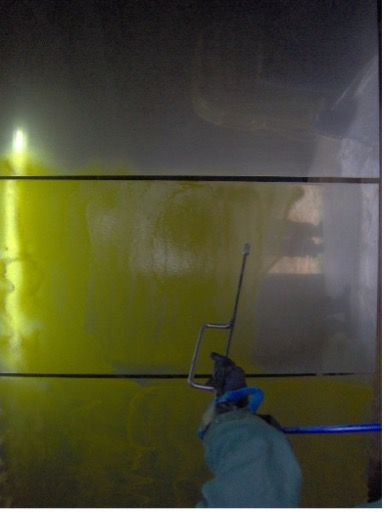
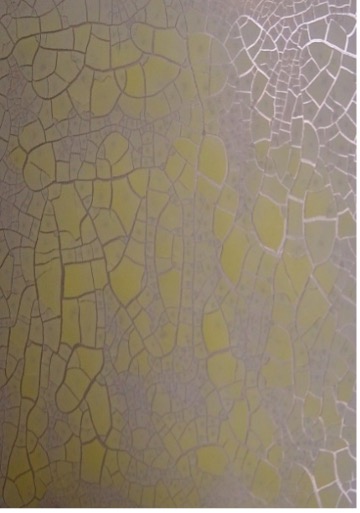
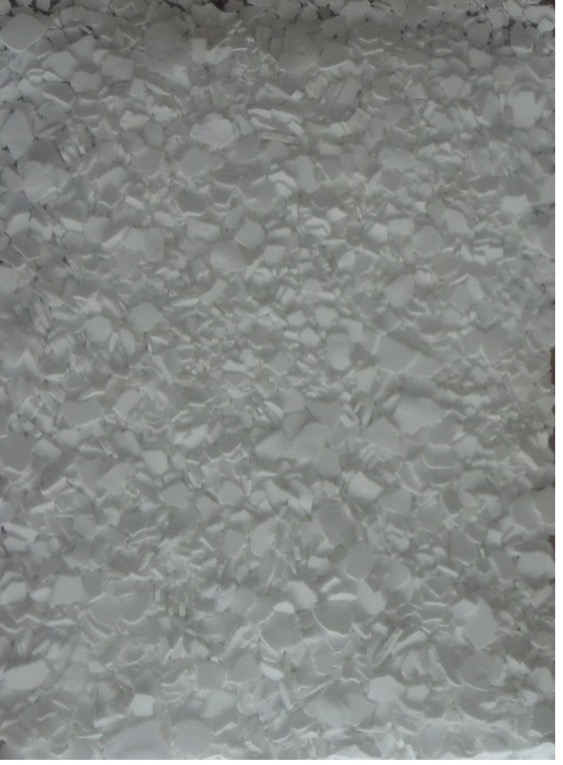
ASPIGEL®, this innovative solution for effluent-free decontamination, has been proposed by FEVDI in partnership with the leading French nuclear laboratory, CEA and Orano, and is commercialized by FEVDI under patents license granted by CEA and Orano. This thixotropic gel (even from ceilings), which allows the gel to be applied without running, regardless of the orientation of the support, dries in the form of non-powdery dry and compact residues. The dry gel comes off the support in about 24 hours (without ventilation, just a few hours with good ventilation) and then it can be removed by vacuuming or brushing. For example, the 130 m² of stainless steel from a cell on the Marcoule site (France) were decontaminated using 80 kg of ASPIGEL® 100E and only generated 20 kg of dry flakes with a DF between 17 to 25 on the first application (Figure 1).
As mentioned, the ASPIGEL® product range of formulation is used for the decontamination of a wide range of materials (See below) from aluminium alloys to concrete (painted or coated surface can be dealt with too) while benefiting from:
- Self-drying and vacuumable decontaminating gels without rinsing,
- Increased contact time,
- More efficient than foaming or liquid decontamination solutions,
- No liquid waste generated,
- Reduces the overall volume of waste,
- Safer for your team.
ASPIGEL 050: Fatty, oily support;
ASPIGEL 100: Stainless steel, inconel;
ASPIGEL 200: Ordinary or black steel;
ASPIGEL 300: Lead;
ASPIGEL 400: Aluminium alloys;
ASPIGEL 500: Concrete.
FEVDI, nuclear experts
With an extensive range of specific solutions, FEVDI has specialised in the consulting, design and manufacture of nuclear decontamination products and equipment for more than 50 years. With unequalled expertise, FEVDI can quickly advise and solve your nuclear contamination problems.
FEVDI, present in many countries, constantly drive the development of tomorrow’s decontamination products. Bringing constant evolution to the range of decontamination approaches to meet the rigorous and demanding specifications of the nuclear sector as well as bringing innovation in deployment methods to create safer and more efficient means of decontamination.
You can contact them at:
Z.I. – 24 rue Louis Pradel – BP 365 – 69969 Corbas, France
Tel: +33 4 78 20 53 35
E-mail: Thomas Xu t.xu@fevdi-nuclear.com
Interested in more nuclear innovations ? Maybe it’s time for you to join our nuclear innovation ecosystem !



